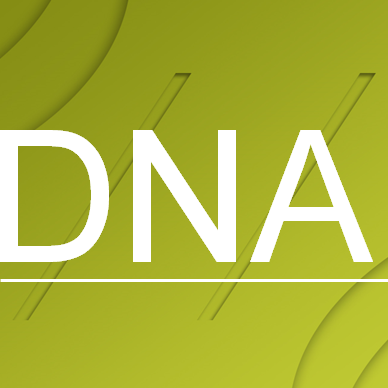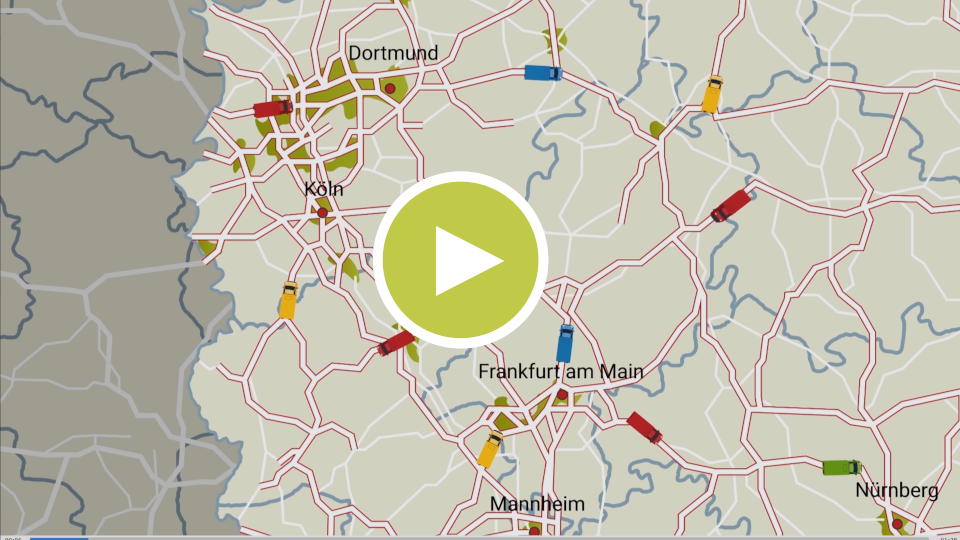Containerizing an application helps to use it more conveniently across different platforms and, most importantly, as a microservice. Further, scaling an application becomes more straightforward as various standardized orchestration tools can be utilized. A Microservice can be launched either (locally) or, for example, as a highly-scalable web-micro-service in a Kubernetes cluster.
This client can be used with JOpt-TourOptimizer Spring Server Compatible Versions:
- 1.3.0-SNAPSHOT (Specs)
- Further documentation - docs.dna-evolutions.com
- Special features - Overview of special features
- Our official repository - public.repo.dna-evolutions.com
- Our official JavaDocs - public.javadoc.dna-evolutions.com
- Our YouTube channel - DNA Tutorials
- Documentation - DNA's RESTful Spring-TourOptimizer in Docker
- Our DockerHub channel - DNA DockerHub
- Our LinkedIn channel - DNA LinkedIn
If you need any help, don't hesitate to get in contact with us via our company website www.dna-evolutions.com or write an email to [email protected].
This repository is part of our JOpt-REST-Suite. It provides examples of how to set up a REST client in C# to access the following DNA Evolution's web services:
- JOpt-TourOptimizer based on JOpt-Core (available as a local Container and via Azure)
The service can be called via an API-Key using our Microsoft Azure-Kubernetes Infrastructure. If you are interested in hosting our JOpt-REST-GeoCoder and JOpt-REST-GeoRouter products in your environment, please get in contact with us.
All our RESTful Services utilize Spring WebFlux and Swagger. Internally the Java version of TourOptimizer is used. Indeed all specifications for the different services are derived from the core library, leading to guaranteed compatibility between all three services.
Optimize a problem consisting of Nodes, Resources, and optionally externally provided connections. In contrast to our other services, we allow you to host your JOpt-TourOptimizer locally. Please refer to "How to start JOpt TourOptimizer in docker" for more help.
Examples
Each of the sections has its README.
The C#-REST-Client class files used by the examples of this repository were generated utilizing the openapi-csharp Generator by OpenAPI Tools.
For creating the models, we used the containerized version of Open-API-Generator by calling:
docker run --rm -v "${PWD}:/local" openapitools/openapi-generator-cli generate -i '/local/swagger/touroptimizer/spec/touroptimizer_spec.json' -g csharp -o /local/generated/dna-csharp-models --library=httpclient --additional-properties=targetFramework=net8.0where ${PWD} needs to be adjusted to find the Open-API-docs under /local/swagger/touroptimizer/spec/touroptimizer_spec.json when mounting the volume ${PWD} into /local. Calling the command will generate the folders /Org.OpenApiTools and /Org.OpenApiTools.Test that are also part of this repository. You can find the touroptimizer_spec.json here.
You can also generate a client in the programming language of your choice utilizing our API-docs. REST facilitates software integration in your desired language (including famous ones like C#, Java, JS, Scala, Python, and many more ). Don't hesitate to reach out to us if you need help setting up your client.
For setting up a local test enviorment with database support, please refer to the separate Hands-on Tutorial: Setting Up a Local Fire and Forget TourOptimizer-Database Test Environment tutorial.
You can start using our examples:
Clone this repository and open it, for example, with Visual Code. The DNA.Evolutions.Csharp.Rest.sln file contains three util-projects that need to be built. In addition, it contains multiple example-projects that will be built.
- Dotnet SKD 8.x (link)
- Working Docker environment for local TourOptimizer instance
You can call (from the main folder):
dotnet restore
dotnet buildThe call will generate the OpenApiTools.dll, Dna.Utils.dll and the example-executables (e.g. TourOptimizerExample.exe) and will download all dependencies. The target-framework is netstandard2.0 (for the libraries) and net8.0 (for the executables). You can also use Microsoft Visual Studio and perform the standard solution build process.
For example, go to src\Dna.Example\TourOptimizer\optimize\bin\Debug\net8.0\ and call the executable TourOptimizerExample.exe. By default, it expects a locally running TourOptimizer at http://localhost:8081.
If you want to get started without the hassle of installing C# and an IDE, we provide a sandbox. The sandbox is based on code-server and can be used inside your browser, and the interface itself is based on Visual Code. The sandbox is available via DockerHub (here). You have to host the sandbox in your Docker environment (Please provide at least 2-4Gb of Ram and 2 Cores). You can pull the sandbox from our DockerHub account (The Dockerfile for creating the sandbox is included in this repository). The latest version of our examples is cloned by default on launching the Docker container, and you can start testing JOpt-REST right away.
You must mount a volume to which the examples of this project are downloaded on the container's startup. After re-launching the container, the latest version of our examples is only cloned if the folder is not already existing, keeping your files safe from being overridden.
Launching a sandbox and mount your current directory ('$PWD') or any other directory you want:
docker run -it -d --name jopt-net-rest-examples -p 127.0.0.1:8023:8080 -v "$PWD/:/home/coder/project" dnaevolutions/jopt_net_example_server:latest
Please wait some time before attempting to login with your browser (1-2 minutes). You can also check the logs of the container. Plugins etc. need to be installed. After your first login, OmniSharp is installed. This also take some time.
After starting the container, you can open http://localhost:8023/ with your browser and login with the password:
joptrest
You can start testing with TourOptimizerDockerExample.cs (assuming you are locally running a JOptTourOptimizer Server at port 8081). The dll should be already created on first startup of the container.
You can run the dll by calling from the terminal:
dotnet /home/coder/project/csharp.rest.examples/src/Dna.Example/TourOptimizer/optimize/bin/Debug/net8.0/TourOptimizerDockerExample.dllModify any cs file in DNA.Example folder. Afterwards, call:
dotnet restore
dotnet buildfrom the terminal and call your modified dll by
dotnet /home/coder/project/csharp.rest.examples/YOUR_MODIFIED_DLL_PATHdotnet sln DNA.Evolutions.Csharp.Rest.sln add src/Dna.Example/TourOptimizer/optimize/NewProject.csproj
dotnet build DNA.Evolutions.Csharp.Rest.sln- If you see the an error like this:
Unhandled exception. System.AggregateException: One or more errors occurred. (Connection refused (localhost:8081))
---> System.Net.Http.HttpRequestException: Connection refused (localhost:8081)
---> System.Net.Sockets.SocketException (111): Connection refused
You are trying to connect to a local JOpt server but have not adjusted the endpoint. Remember, the sandbox is a docker container and you need to connect to it via the endpoint http://host.docker.internal:8081 instead of http://localhost:8081TourOptimizerDockerExample.cs from the namespace Optimize where Endpoints.LOCAL_SWAGGER_TOUROPTIMIZER_FROM_DOCKER_URL is used instead of Endpoints.LOCAL_SWAGGER_TOUROPTIMIZER_URL.
- If you see the an error like this:
Build failed
simply try again.
JOpt is a flexible routing optimization engine written in Java, allowing to solve tour-optimization problems that are highly restricted. For example, regarding time windows, skills, and even mandatory constraints can be applied.
Click to open our video:
For reading our license agreement and for further information about license plans, please visit www.dna-evolutions.com.
A product by dna-evolutions©

